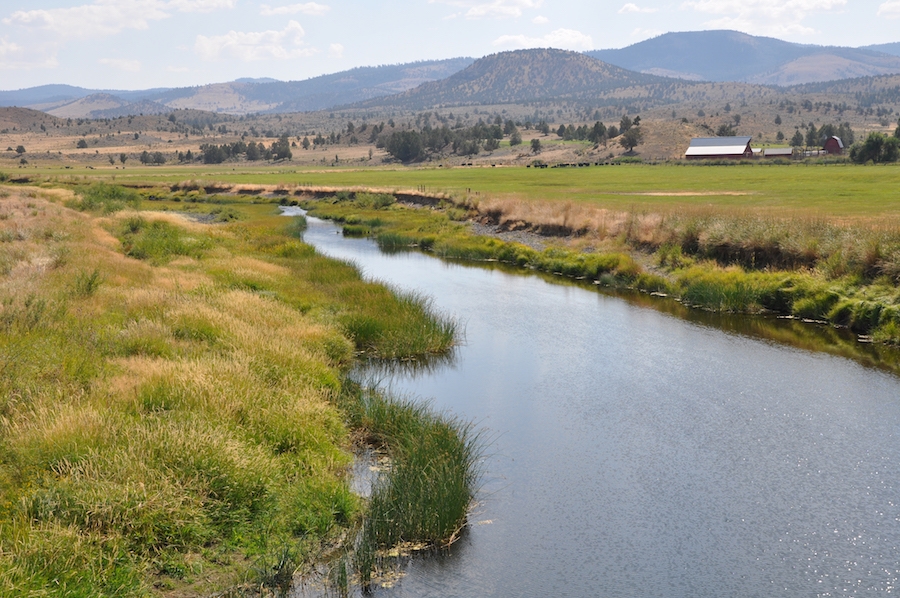The environmental regulator lacks resources to set targets for reducing pollution in an eastern Oregon river vital to agriculture, fishing and recreation.
I first learned about the effect of pollution in the Crooked River when I reported in the spring on water quality issues at the Pelton Round Butte dam, a large Portland General Electric-owned hydroelectricity project in central Oregon.
Polluted water from the Crooked River, a 125 mile-long tributary of the Deschutes River that covers 2.9 million acres of mostly agricultural and rangeland in eastern Oregon, runs into Lake Billy Chinook, a reservoir at the top of the state’s largest non-federally owned dam.
When the utility releases water from the reservoir, pollutants from the Crooked flow into the Lower Deschutes River at the bottom of the hydroelectric project.
These pollutants have reduced water quality in the Deschutes, a river once-known for world class salmon and steelhead fishing. Portland General Electric is embroiled in a lawsuit with the Deschutes River Alliance over its water release practices, which the organization claims has ruined water quality in the river.
RELATED STORY: A DAMAGED RIVER IMPERILS A CENTRAL OREGON TOWN
Poor water quality is impacting rural economies reliant on recreation. Business owners in the small central Oregon town of Maupin located downstream from the dam fear they will have to close because anglers no longer come in droves to fish in the nearby Deschutes River.
I wanted to find out more about water quality issues in the Crooked River – what are the sources of pollution and what is being done to solve the problem.
Finding out the answer was more difficult than I thought. That is because Oregon’s environmental regulator, the Department of Environmental Quality (DEQ), has no money to conduct a thorough evaluation of river water quality data in the Crooked and set targets for reducing pollutants.
“The problem is not having enough resources,” said Bonnie Lamb, natural resource specialist at the DEQ.
The water quality problems in the Crooked River have existed for many years. A DEQ study from 2011 describes general surface water quality conditions in the Crooked River as “poor.”
A more recent DEQ study from March 2018 reports the river has excessive pH levels at two of its monitoring sites. Dissolved oxygen also exceeds standards at one of the sites, while both sites have worsening levels of bacteria.
Extreme water pH and low levels of dissolved oxygen are a sign of excessive algae growth, which harms fish and other aquatic life. The river’s elevated levels of bacteria, including e. coli, is harmful to human health. Among sources of bacteria are livestock manure and wildlife waste.
About 40% of land in the Crooked River Basin is in private hands. Cattle grazing, and hay and alfalfa crops dominate agricultural activities along the river, and some of the sources of pollution come from poor land management practices at farms and ranches.
A typical bad practice among ranches is to allow cattle to access streams along the Crooked all year instead of seasonally. Year-long cattle grazing increases the risk of manure getting into waterways, especially during the wet season.
Another issue is farmers allowing water used for irrigating crops to flow back into the basin’s streams. This water is often tainted with fertilizer and other agricultural pollutants.
“Across the state these practices were used for a long time,” says Ellen Hammond, monitoring and implementation lead in the Agricultural Water Quality Management Program at the Oregon Department of Agriculture. “A lot people changed these practices. But in some places it is still happening.”
The executive director of the Oregon Cattlemen’s Association, Jerome Rosa, said he can’t say whether questionable grazing practices are contributing to the pollution in the Crooked River. “Grazing practices have greatly improved,” said Rosa. “There were some mistakes in the 1800s; absolutely there was overgrazing. As we learn more, we make improvements.”
It is difficult to pinpoint the exact sources of the pollution in the Crooked because the DEQ does not have the resources for assessing data to establish limitations on pollutants entering the river. These limits, known as total maximum daily loads, specify the daily amount of pollution a water body can receive and still meet water quality standards. The DEQ is required to do this assessment for waterways that do not meet water quality standards under the federal Clean Water Act.
The DEQ is currently putting together total maximum daily loads for the Lower and Upper Deschutes. Standards for the Crooked River would be next on the list of to-dos if the agency had the resources, says the DEQ’s Lamb.
The DEQ’s financial woes are well known. The Secretary of State’s Audits Division issued a report at the start of the year that found the agency does not have enough staff to issue timely air quality permits. In the past decade nearly a quarter of permits were not issued on time, endangering the state’s air quality, the auditor’s report concluded.
Another water quality organization strapped for cash is the Crooked River Watershed Council. The Prineville-based nonprofit, which has two paid staff and 16 volunteer board members, works with landowners to improve watershed health.
Between 2010 and 2014 the council collected comprehensive water quality data from the Crooked at 32 locations. The organization no longer has funds, which it used to receive from the DEQ, to collect data, despite several attempts raise money. Chris Gannon, director of the council, acknowledges that by 2020 the data it has collected will look antiquated.
“The DEQ just had too many applications for funds. They have too little resources,” says Gannon.
To subscribe to Oregon Business click here.



